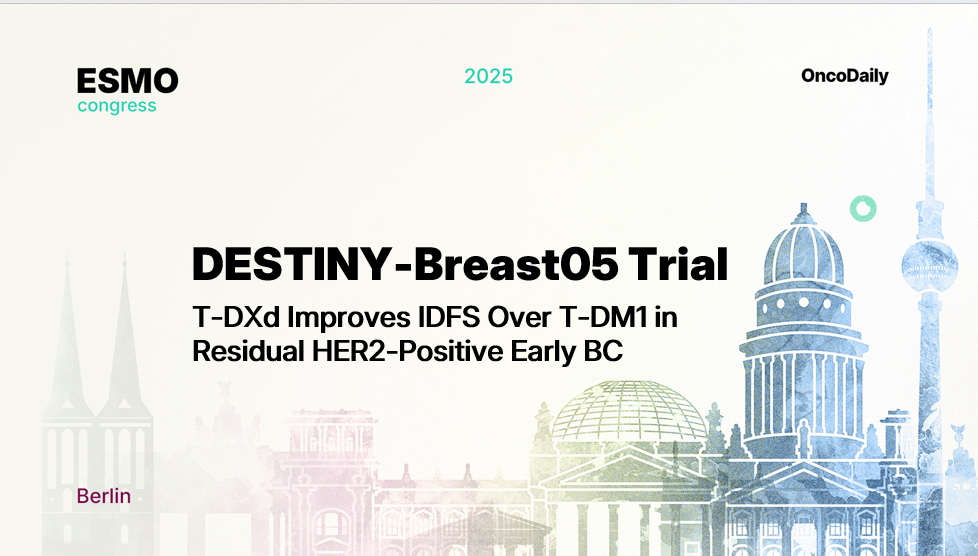Matthew Kurian, Assistant Professor of Medicine at the University of Kentucky College of Medicine and Physician at St. Elizabeth Healthcare, shared a post on LinkedIn:
“ESMO25 | DESTINY-Breast05 (DB-05).
T-DXd vs T-DM1 in HER2+ early breast cancer with residual invasive disease post-neoadjuvant therapy.
Study Design:
- Ph III | N = 1,635 | Adjuvant setting after NACT + HER2-targeted therapy
- Randomized to →
• T-DXd 5.4 mg/kg q3w × 14 cycles
• T-DM1 3.6 mg/kg q3w × 14 cycles - Primary endpoint: iDFS
Key Results:
• 3-yr iDFS 92.4 % vs 83.7 % (HR 0.47 [0.34–0.66], p < 0.0001)
• CNS recurrences ↓
• ILD 9.6 % (2 G5) vs 1.6 % – mostly G1-2, manageable
• Benefit consistent across all subgroups
Population:
Higher-risk vs KATHERINE → ~2× more inoperable cases, ~2× more node-positive at surgery, 80 % dual HER2 blockade pre-op.
Represents a new standard for very-high-risk HER2+ disease in the post-neoadjuvant setting.
Discussion & Takeaways:
T-DXd delivers a ~9 % absolute iDFS gain at 3 yrs in this challenging population – especially those limited by previous taxane-related neuropathy that would have been difficult for those getting onto TDM1.
However:
• How do we balance efficacy vs ILD risk in real-world practice?
• Paolo Tarantino’s thoughts- should T-DM1 remain for lower-risk residual disease while T-DXd takes the high-risk tier?
• Could shorter ADC courses or ctDNA-guided approaches further refine therapy and reduce chemo exposure?
The ADC era in HER2+ early breast cancer is accelerating – DB-05 sets today’s standard; DB-11 hints at tomorrow’s possibilities.”
You Can Also Read:

